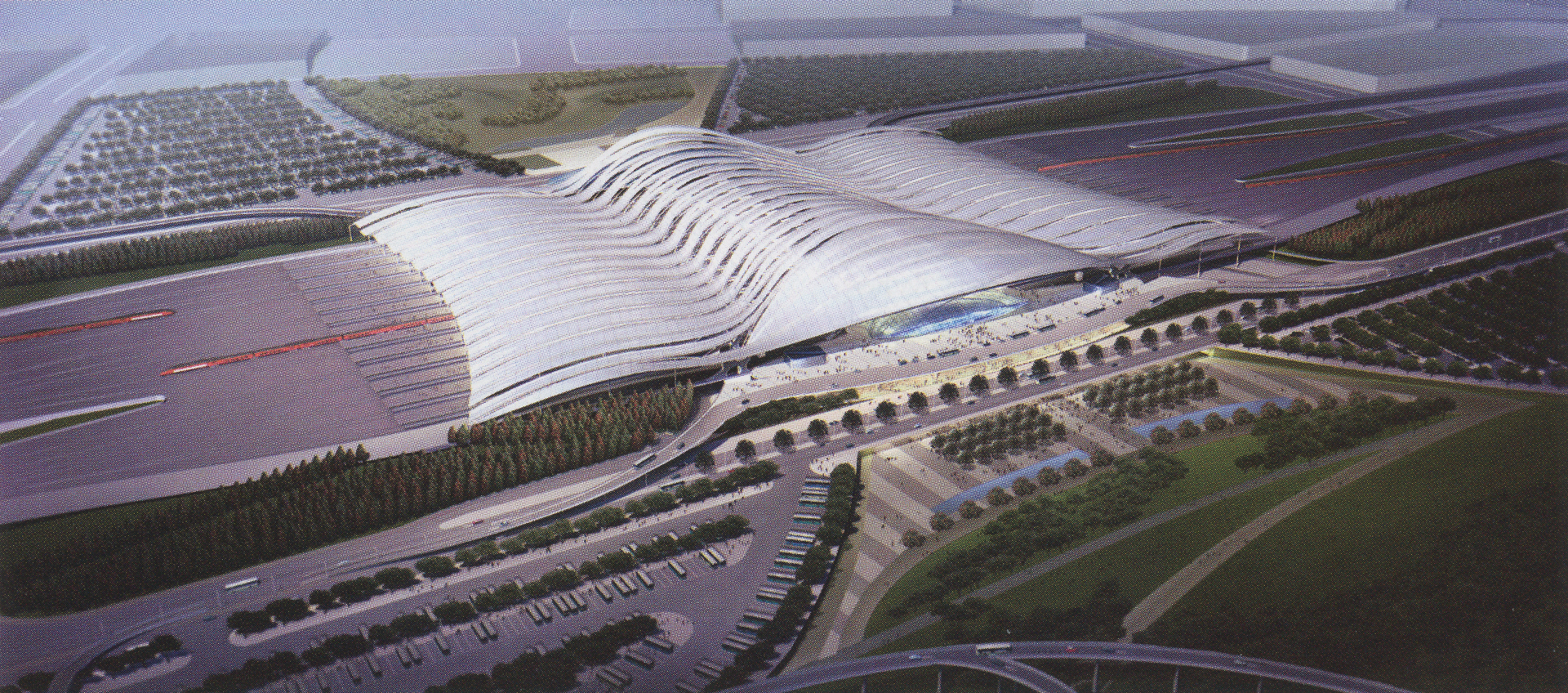Onur Yüce Gön: Nanjing South Station
Artist(s):
Title:
- Nanjing South Station
Exhibition:
Creation Year:
- 2008
Category:
Artist Statement:
As a competition entry, KPF’s design for Nanjing South Station was one of many stations planned as part of a major expansion of China’s high-speed and regular service train lines. The station is sited in a slight valley, bisected through the center by a “green corridor” that connects the area’s major parks. Inside the station, the green corridor takes the form of an inter-modal hall. The arrival hall is located around the inter-modal hall, and above it are the station’s platforms and departure lounges. Above the elevated departure lounges roof is the metaphorical and physical centerpiece of the project: a large, sweeping roof that protects passengers from rain, sun, and wind.
Using parametric modeling techniques, initial designs for the station’s roof were tested and then manipulated in order to optimize environmental parameters such as light, wind, rainwater collection, and natural ventilation. Structural efficiencies were tested in a similar manner. The roof pieces were designed with S-shaped sections, and the variations were derivatives of various configurations of the discrete S curves, which were parametrically controlled. The layout and organization of the S curves were
defined with global rule-sets, and the final design configuration was a result of these rule-sets, rather than a “hand-crafted” geometry. The behavior and ranges of adaptation for the S curves were defined beforehand, thus the geometry was already being developed under certain constraints. In other words, the design was informed and restricted by certain limitations, so it was pre-rationalized with embedded
intelligence in the parametric model.
By designing parametrically, within the constraints of the program brief (set platform widths, column locations, and roof coverage), the design team generated a form that was the absolute product of the imaging technology. Through all stages of design – from the initial site analysis to the structural detailing – parametric modeling was used to help build, test, and improve the design team’s formal and programmatic decisions.
Other Information:
Client
Ministry of Railroads, People’s Republic of China
Location
Nanjing, China
Design Team
Onur Gun, David Malott, Forth Bagley, Nicholas Wallin, Zhe Wang, Thomas Brown, Charlie Portelli, Jenna Fizel
The CNC milling of the massing model for this project was made possible through the generous donation from SITU Studio www.situstudio.com





